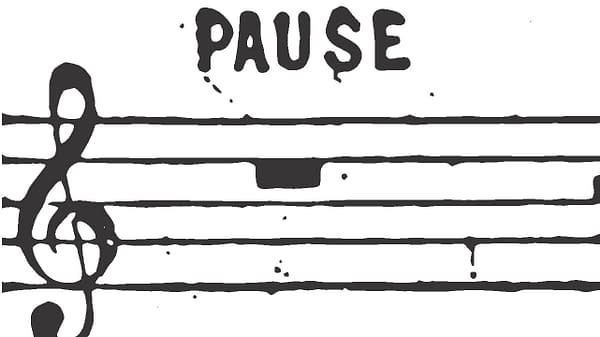Posted in: Music, Pop Culture | Tagged: bach, john cage, john dowland, Mozart, Sting, The Police, thomas tallis
Silence in Music: an Exploration of Sound
According to Sting, silence is perfection. A bit of an odd statement out of context from a professional rock musician, but if you think about it, he's right. In an interview for his 2006 classical album featuring early lute compositions, he talks about rediscovering the origins of music and breaking down what the composition of music means. "I've always maintained that silence is the perfect music. What we do as musicians is we create a frame around silence."

That quote struck me as interesting, so I decided to do a little reflection of my own into the use of silence as a component of music just as much as the instrumentation, voice, and notes played. Often at the end of a piece, the artist or composer will decidedly end on silence to allow the music to resonate with and be absorbed by the audience as a moment of reflection of sorts.
Visual artists and photographers often utilize negative space in this same way — art is not just about what is there, but equally about what is not there. Sculptors don't so much set out to create carve a masterpiece, but instead slowly work to take away everything that isn't their subject. Silence is the same theory, but in an opposite form: a musician only adds the particular sounds add to the piece and should be there.
John Cage famously composed an entire piece that's four minutes and thirty-three seconds of silence, but it's not really about the lack of played music and what's not there as it is about what you as the audience is listening to — the thoughts, the unquiet mind, the person shifting in their chair, the ticking of the clock — it's a commentary on whatever you make it. The perfect piece of music is the one you interpret for yourself, making this piece highly individualized and a completely new internal experience each time it's listened to. By adding nothing, Cage created a work that is both a different piece every time it's performed and incredibly simple to stage.
While Cage's 4'33" is more of a reflective piece on the nature of music, silence, and one's own interpretation of their surroundings, silence is more commonly utilized in less flashy ways. For example, in between the movements of a classical concert, there's a gap of silence. That break where the musicians adjust, the soloist collects themselves, the audience coughs — that moment isn't for the musicians' sake; it's intentionally built in by the composer as time for the audience to process the music they just heard and to prepare for the next movement. Think of that silence as a musical palate cleanser of sorts in between courses at a fancy dinner. A more modern example of silence is its use in the metal and industrial genres; the juxtaposition of heavy sound set next to silence or near-silence is effective and utilized by many including Nine Inch Nails, Radiohead, and Tool.
In the early eras of music, silence played a big part in creating music by virtue of resonance. The first instruments used were voices, which create echo, especially in a cathedral or church, as was the performance space for most music. When allowed to ring out, the ambient noise created a much larger sound than that of the choir or individual voice alone. This is the same reason why heavy vocal vibrato is common in music until the modern era around the early 20th century – the use of resonance in silence. When stacked and performed in a madrigal, these resonated sounds were believed by some to summon angels, hence the early use of music performance solely in religion and the church.
Even once instruments were introduced to music, the emphasis was equally placed on silence as it was on the notes themselves. The harpsichord, while an early predecessor of the piano and similar in many ways, distinctly lacks the ability to sustain, unlike the piano. If you look at original scores composed for the harpsichord by the likes of Mozart or Bach, they lack sustain notations and slurs with the instruction being on hitting each key for its exact duration in the sequence. When performed solo, this allows the weight of each note or phrase to have time for the audience to process in the silence space between the notes. However, the opposite is also true: the silence between can also be used to allow different instruments to resonate, as is the case of the organ, with its signature grandiose sound.
While silence may not necessarily be golden or even godly, it is perfect; in silence, we truly know ourselves by listening to the "perfect music" within.














